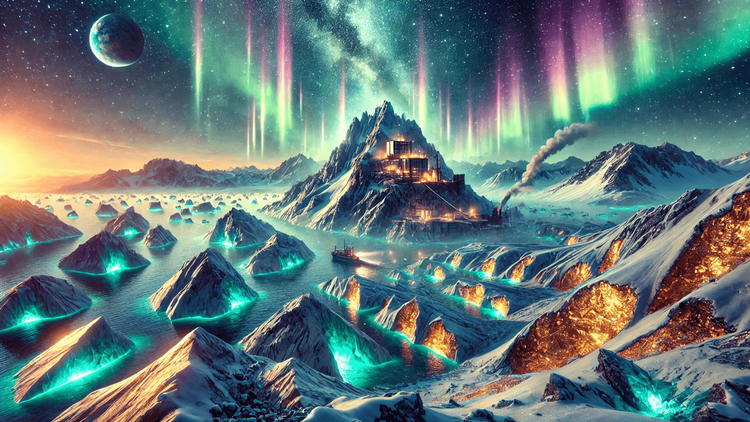Greenland: The Strategic Gem in the Arctic Resource Race
Greenland’s Untapped Mineral Wealth: A Key to Global Energy and Strategic Dominance

Greenland, a semi-autonomous territory of Denmark, has emerged as a focal point in the global race for critical mineral resources. With its vast, largely untapped deposits, the icy landmass holds immense potential for industries ranging from renewable energy to advanced manufacturing. Yet, the road to fully harnessing these resources is fraught with environmental concerns, legal hurdles, and opposition from indigenous communities.
A Treasure Trove of Critical Minerals
A 2023 survey revealed that 25 out of the 34 minerals deemed “critical raw materials” by the European Commission are found in Greenland. These include essential elements like rare earths, graphite, and nickel, which are crucial for green technologies such as electric vehicles (EVs) and wind turbines.
Rare Earths: Powering the Green Revolution
Greenland’s Gardar Province is home to three significant rare earth deposits. Companies like Critical Metals Corp, Energy Transition Minerals, and Neo Performance Materials are vying to develop these resources. Rare earths are indispensable for the permanent magnets used in EVs and renewable energy infrastructure.
Graphite: A Key Battery Component
Graphite, another critical mineral, is abundant in Greenland. GreenRoc’s Amitsoq project, for which an exploitation license has been sought, underscores the island’s potential to become a major graphite supplier. This mineral plays a pivotal role in EV batteries and steel production.
Exploration Challenges and Opportunities
Copper and Nickel: Underexplored Frontiers
Greenland’s copper deposits remain largely underexplored, with promising areas in the northeast and central-east regions. London-listed 80 Mile is actively pursuing the Disko-Nuussuaq deposit, which also contains nickel, cobalt, and platinum. Meanwhile, Anglo American has been granted exploration licenses to search for nickel in western Greenland, signaling growing interest from global mining giants.
Zinc and Gold: A Growing Interest
The Citronen Fjord project, touted as one of the largest undeveloped zinc resources, is located in Greenland’s north. Additionally, Amaroq Minerals launched a gold mine in Mt Nalunaq, marking a significant milestone in the country’s mining history.
Environmental and Political Roadblocks
The extraction of oil and natural gas is banned in Greenland to preserve its pristine environment. Moreover, the development of the mining sector faces resistance from local communities and stringent regulatory frameworks. The 2021 ban on uranium mining by the Inuit Ataqatigiit party halted key projects like the Kuannersuit rare earths venture.
The Strategic Importance of Greenland’s Resources
Greenland’s mineral wealth is not just an economic asset but a strategic one. Its deposits of titanium, vanadium, tungsten, and diamonds have applications ranging from industrial manufacturing to national defense. For the United States, securing access to these resources is crucial to countering China’s dominance in the supply of critical minerals.
The US has extended new economic aid packages to Greenland as part of its Arctic strategy. This move reflects Washington’s broader aim to counter Chinese influence and secure critical supply chains.
Conclusion
Greenland stands at the crossroads of global energy transition and geopolitical rivalry. Its vast mineral resources could make it a key player in the future of green technology and industrial innovation. However, realizing this potential will require a delicate balance between environmental preservation, indigenous rights, and economic development.






